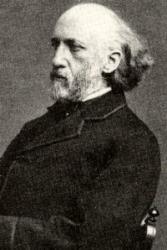Planning worship?
Check out our sister site, ZeteoSearch.org,
for 20+ additional resources related to your search.
- |
User Links
Search Results
Rest in the Grave
Author: Charles Beecher Appears in 14 hymnals First Line: There's rest in the grave
Rest in the Grave
[There's rest in the grave]
Appears in 3 hymnals Composer and/or Arranger: Anon. Incipit: 51345 56661 17765 Used With Text: Rest in the Grave
[There's rest in the grave]
Rest in the Grave
Author: Charles Beecher Hymnal: Popular Hymns Number 2 #213 (1901) First Line: There's rest in the grave Languages: English Tune Title: [There's rest in the grave]
Rest in the Grave
There's rest in the grave
Author: Charles Beecher Hymnal: Popular Hymns, revised #174 (1885) Languages: English Tune Title: REST IN THE GRAVE
There's rest in the grave
There's rest in the grave
Author: Charles Beecher Hymnal: The Standard Church Hymnal #484 (1888) Languages: English Tune Title: REST IN THE GRAVE
There's rest in the grave
Anonymous
Person Name: Anon. Composer of "[There's rest in the grave]" in Popular Hymns Number 2 In some hymnals, the editors noted that a hymn's author is unknown to them, and so this artificial "person" entry is used to reflect that fact. Obviously, the hymns attributed to "Author Unknown" "Unknown" or "Anonymous" could have been written by many people over a span of many centuries.
Anonymous
William B. Bradbury

1816 - 1868 Person Name: W. B. Bradbury Composer of "REST IN THE GRAVE" in The Standard Church Hymnal William Bachelder Bradbury USA 1816-1868. Born at York, ME, he was raised on his father's farm, with rainy days spent in a shoe-shop, the custom in those days. He loved music and spent spare hours practicing any music he could find. In 1830 the family moved to Boston, where he first saw and heard an organ and piano, and other instruments. He became an organist at 15. He attended Dr. Lowell Mason's singing classes, and later sang in the Bowdoin Street church choir. Dr. Mason became a good friend. He made $100/yr playing the organ, and was still in Dr. Mason's choir. Dr. Mason gave him a chance to teach singing in Machias, ME, which he accepted. He returned to Boston the following year to marry Adra Esther Fessenden in 1838, then relocated to Saint John, New Brunswick. Where his efforts were not much appreciated, so he returned to Boston. He was offered charge of music and organ at the First Baptist Church of Brooklyn. That led to similar work at the Baptist Tabernacle, New York City, where he also started a singing class. That started singing schools in various parts of the city, and eventually resulted in music festivals, held at the Broadway Tabernacle, a prominent city event. He conducted a 1000 children choir there, which resulted in music being taught as regular study in public schools of the city. He began writing music and publishing it. In 1847 he went with his wife to Europe to study with some of the music masters in London and also Germany. He attended Mendelssohn funeral while there. He went to Switzerland before returning to the states, and upon returning, commenced teaching, conducting conventions, composing, and editing music books. In 1851, with his brother, Edward, he began manufacturring Bradbury pianos, which became popular. Also, he had a small office in one of his warehouses in New York and often went there to spend time in private devotions. As a professor, he edited 59 books of sacred and secular music, much of which he wrote. He attended the Presbyterian church in Bloomfield, NJ, for many years later in life. He contracted tuberculosis the last two years of his life.
John Perry
William B. Bradbury
Charles Beecher

1815 - 1900 Author of "Rest in the Grave" in Popular Hymns Number 2 Beecher, Charles, son of the well-known Dr. Lyman Beecher, whose autobiography he chiefly edited, and brother of Henry Ward Beecher, was born at Litchfield, Connecticut, 1815. Mr. Beecher was for some time a Congregational pastor at Georgetown, Mass. He has published Review of Spiritual Manifestations, 1853; Pen Pictures of the Bible, 1855, &c. His hymns were contributed to his brother's Plymouth Collection, 1855, and include:—
1. There's rest in the grave. Heaven.
2. We are on our journey home. Heaven.
The latter is in the more extensive use, but both are unknown to the English collections. [Rev. F. M. Bird, M.A.]
-- John Julian, Dictionary of Hymnology (1907)
Charles Beecher


 My Starred Hymns
My Starred Hymns


